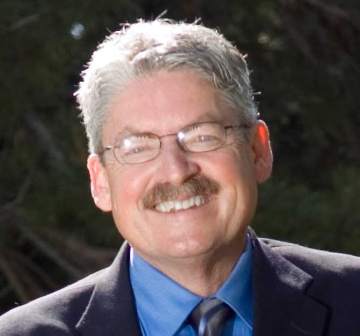By James O. Hill
Every day we get inundated with information about what to eat, but unfortunately, that information is often confusing and conflicting. Eat a diet high in carbohydrate and low in fat. No wait. Eat a diet low in carbohydrate and high in fat. I dont blame the public for being confused. What is the best diet?
You may be surprised to know that the best diet for you depends on whether you are an athlete or a couch potato. Being physically active keeps your metabolism working optimally and affects the way your body uses food for fuel. It starts with how much food you need.
If you are physically active, like many people in Colorado, you get to eat more food without gaining weight than your sedentary neighbors. This means that you get to have some fun with your diet you dont have to obsess over every morsel that passes through your mouth. You dont worry about limiting carbohydrate, since carbohydrate is the preferred fuel for active muscles. During the day, an active body will use more total fat for fuel than a sedentary body, allowing you to eat more dietary fat without negative consequences. Physically active people have a metabolism that is flexible, which means they shift quickly to using carbohydrate for fuel after meals and fat for fuel between meals. This is an advantage to maintaining a healthy body weight. Finally, appetite regulation is more precise in active than in inactive people.
It is possible to be sedentary and have a healthy weight, but it requires significant and permanent food restriction. While a calorie-restricted, low carbohydrate diet would be fine for a sedentary person, such a diet would not be adequate for an active person.
Researchers now understand that being sedentary is an abnormal state and leads to many adverse consequences to your metabolism that affect how your body uses food for fuel. You are not expending calories in exercise, so your body needs less total energy. This means you have to pay close attention to your diet in order not to overeat and gain weight. Getting adequate amounts of carbohydrate is not a problem since your muscles arent moving as much and can use either fat or carbohydrate as fuel. Eating too much carbohydrate leads to weight gain, but eating too much fat does as well since sedentary bodies burn less fat than active ones. Finally, being sedentary seems to disrupt your appetite regulation, so you may actually be hungrier than if you were more active.
Unfortunately, we have become a nation of overweight, sedentary people and as a result are experiencing high rates of diabetes, heart disease, cancer, orthopedic problems and cognitive decline. Our lifestyles are the major determinant of whether or not we suffer from these maladies.
This has been clearly shown in many research studies. For example, a large clinical trial demonstrated that producing a 5 percent weight loss and modest increases in physical activity resulted in a 68 percent decrease in the risk of developing diabetes in those who were most susceptible. If we want to prevent these diseases, we have to change our lifestyles.
Being overweight or obese puts you at a much higher risk of getting a chronic disease and your weight is related to how much you move and what you eat.
I believe our goal is not to identify the best diet for our current sedentary population, but to get people more active and promote the best diet for an active lifestyle. Being well and living a healthy life should not be about deprivation counting calories and constantly restricting food intake. It should be about building a physically active foundation for wellness and enjoying the food that allows you to maintain a healthy body weight and improves all aspects of mind and body.
This is the lifestyle many people in Colorado lead and should be the lifestyle for everyone in order to maximize wellness.
James O. Hill, Ph.D., is executive director of the University of Colorado Anschutz Health and Wellness Center. He is a global leader in the fight against obesity. This article was first published in the Vail Daily

